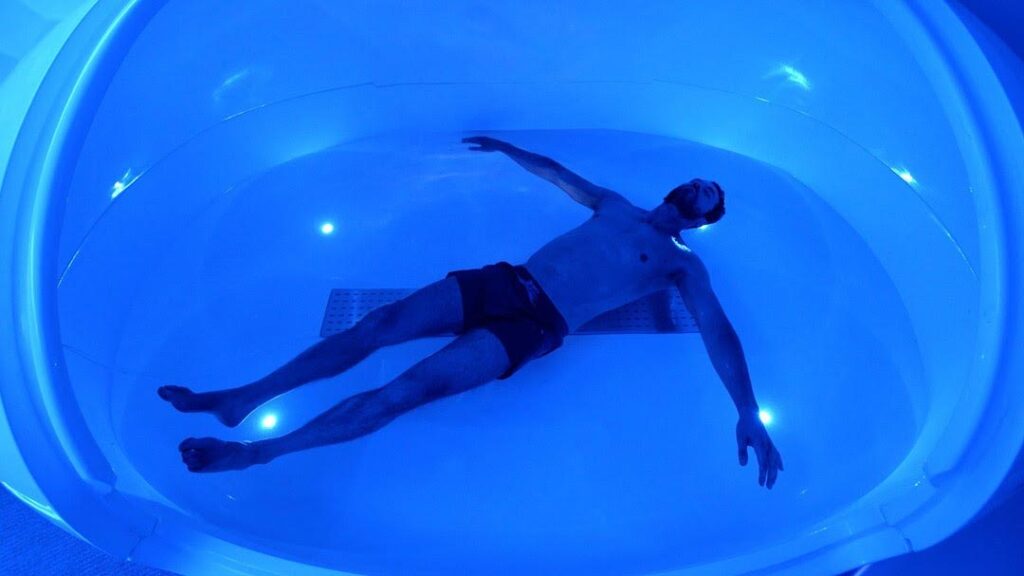The Ultimate Guide to Float Therapy: Benefits and What to Expect

It is more vital than ever to discover efficient techniques to relax and rejuvenate in today’s fast-paced society. Float therapy is one unusual approach to wellbeing that is rapidly growing in popularity. It offers a number of benefits, including deep relaxation. What is float therapy? What are the benefits? What can you anticipate from a session? All of that and more in this detailed explanation. Let’s explore float therapy together and see whether it could be a great complement to your current self-care regimen.
What is Float Therapy?

Sensory deprivation therapy, isolation tank therapy, or float therapy is a form of treatment in which the patient floats in a tank with a very concentrated Epsom salt and water solution. When the solution reaches skin temperature, floating becomes second nature. The purpose of the tank is to create an atmosphere of total sensory deprivation by isolating the subject from any outside influences, such as light and noise.
How Does It Work?
You can float effortlessly on the water’s surface thanks to the high concentration of Epsom salt, which produces buoyancy. To make it feel even lighter, the water is maintained at a constant temperature of about 93.5°F (34.5°C), which is the same as the surface temperature of the skin. In this setting, you can let your body and mind unwind to a profound degree.
Benefits of Float Therapy

There are several psychological and physiological advantages to flotation therapy. Among the many benefits, here are a few:
Physical Benefits
- Muscle Relaxation: The Epsom salt solution’s buoyancy will alleviate strain on your muscles and joints, allowing you to relax and unwind.
- Improved Sleep: Because it promotes such profound relaxation, many patients find that their sleep improves following float treatment sessions.
- Enhanced Recovery: Athletes frequently choose float treatment as a means to expedite the recuperation process following strenuous training or injury.
- Pain Relief: Float treatment is effective in treating fibromyalgia, arthritis, and back pain, among other chronic pain disorders.
Mental Benefits
- Stress Reduction: Lowering cortisol levels, which in turn reduces stress and anxiety, is one benefit of the sensory deprivation environment.
- Improved Focus: Many people who try float therapy report that it helps them focus and think more creatively by clearing their thoughts.
- Mental Clarity: The meditative state one enters during float therapy has the potential to bring about a sense of calm and clarity of mind.
- Emotional Balance: Mood Improvement and Emotional Stabilization Float therapy is a great way to boost your mood and emotional stability.
What to Expect During a Float Therapy Session
If you’ve never been float treatment before, you might be wondering what to expect from a normal session. What follows is a detailed outline of what to anticipate:
1. Arrival and Preparation
Upon your arrival to the float center, a team of helpful staff members will be waiting to assist you. You will receive a concise orientation that covers the basics of the tank, the solution, and your session. We will also supply you with the necessities, such as earplugs, towels, and maybe even a robe.
2. Pre-Float Shower
Take a shower to wash away any dirt, oils, or lotions before getting in the float tank. As a result, the tank stays cleaner, and you have a better time overall.
3. Entering the Float Tank
You will be able to enter the float tank after you have showered. Floating clothes are optional; wear whatever makes you feel most comfortable. You can choose to keep the tank door open or closed, and some places even provide music and lighting options to help you unwind.
4. Floating
The ease with which the water supports your body becomes immediately apparent as you relax and begin to float. Your mind might attain a deep level of relaxation in the sensory deprivation setting. Any number of feelings might wash over you, from complete weightlessness to an overwhelming sense of peace.
5. Exiting the Tank
A soothing melody or a dim light will indicate that it is time to get out of the tank after your session, which usually lasts between sixty and ninety minutes. You’ll gradually adjust to your new environment and wash off the Epsom salt solution with a second shower.
6. Post-Float Relaxation
After your float, you can unwind in the center’s designated relaxation area with a hot beverage. Now is the perfect moment to take stock of what the float has done for you and think about what you’ve learned.
Tips for a Successful Float Therapy Session
Think about these things to do so that your float treatment session goes well:
- Stay Hydrated: Make sure to drink lots of water both before and after your workout.
- Avoid Caffeine: For the best results during your float, it’s best to abstain from coffee at least a couple hours prior to your session.
- Eat Lightly: To keep from feeling hungry or full while floating, eat a small meal at least an hour or two before your session.
- Relax and Let Go: Full relaxation and acclimatization to the surroundings may require a few minutes. Embrace the experience and let go of any resistance.
Frequently Asked Questions (FAQ)
1. Is float therapy safe?
The majority of individuals think that float therapy is safe. You should always check with your doctor before attempting float treatment if you have any preexisting medical issues.
2. How often should I float?
Your individual requirements and objectives will dictate the recommended frequency of float therapy sessions. Floating is something some individuals do weekly, while others may do it monthly. It’s recommended to begin with a small number of sessions to gauge the impact on your mind and body.
3. Can I float if I’m claustrophobic?
Yes, float therapy is still a great option for many claustrophobes. The tank door can be left open or slightly ajar, and for bigger centers, float rooms are available as an alternative to tanks.
4. What should I bring to a float therapy session?
A float therapy session requires very little preparation. You will usually find that most facilities supply all the necessary items, such as toiletries, earplugs, and towels. For the time after your session, you might find it helpful to have a hairbrush or other personal stuff on hand.
5. How do I clean the salt off my skin after floating?
The Epsom salt solution can be rinsed off with a shower after your session. There will be no lingering salty residue because it is water-soluble.
Conclusion
When used regularly, float treatment can help you relax deeply, alleviate stress, and improve your health in general. Float therapy provides a novel and successful approach to a variety of health and wellness issues, including but not limited to: more mental clarity, better physical health, and greater relaxation. If you follow this instructions, you will be able to try float treatment with confidence and enjoy all of its benefits. Get in on the float therapy action and see the miraculous effects for yourself!
You Can Also Read Here Overcoming Chronic Back Pain: A Comprehensive Guide

 Mushroom Coffee: Exploring Health Benefits and Taste
Mushroom Coffee: Exploring Health Benefits and Taste  Understanding the MCHC Blood Test: What You Need to Know
Understanding the MCHC Blood Test: What You Need to Know  The Best Teeth Whiteners: Achieve a Brighter Smile Today
The Best Teeth Whiteners: Achieve a Brighter Smile Today  Cardiopulmonary Resuscitation: A Step-by-Step Guide to Emergency Response
Cardiopulmonary Resuscitation: A Step-by-Step Guide to Emergency Response  Overcoming Chronic Back Pain: A Comprehensive Guide
Overcoming Chronic Back Pain: A Comprehensive Guide  LASIK Surgery: A Modern Solution for Vision Correction
LASIK Surgery: A Modern Solution for Vision Correction  The Art and Importance of Designing Safe and Effective Horse Jump Standards
The Art and Importance of Designing Safe and Effective Horse Jump Standards  The Art of Compromise: Resolving Family Disputes Amicably
The Art of Compromise: Resolving Family Disputes Amicably  The Benefits and Challenges of Sustainable Roofing for Commercial Buildings
The Benefits and Challenges of Sustainable Roofing for Commercial Buildings  Transforming Your Home with Terrazzo Flooring: A Timeless Choice for Elegance and Durability
Transforming Your Home with Terrazzo Flooring: A Timeless Choice for Elegance and Durability